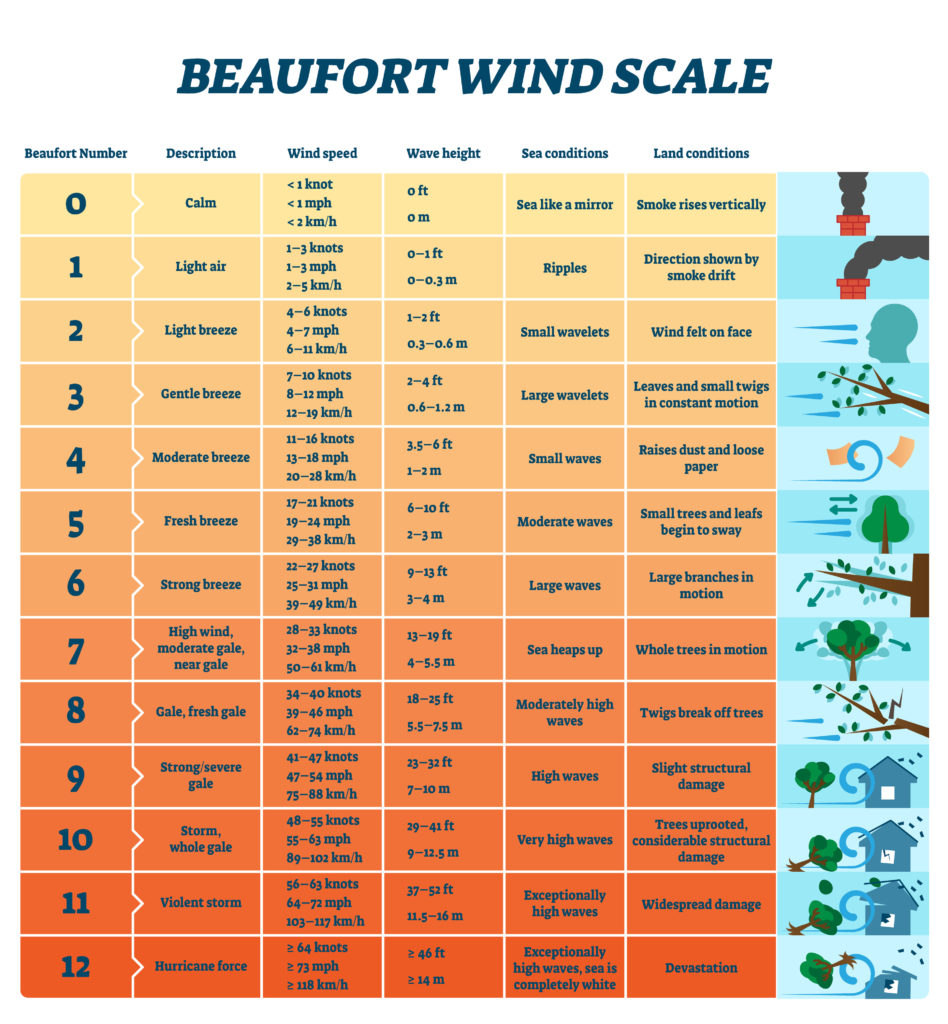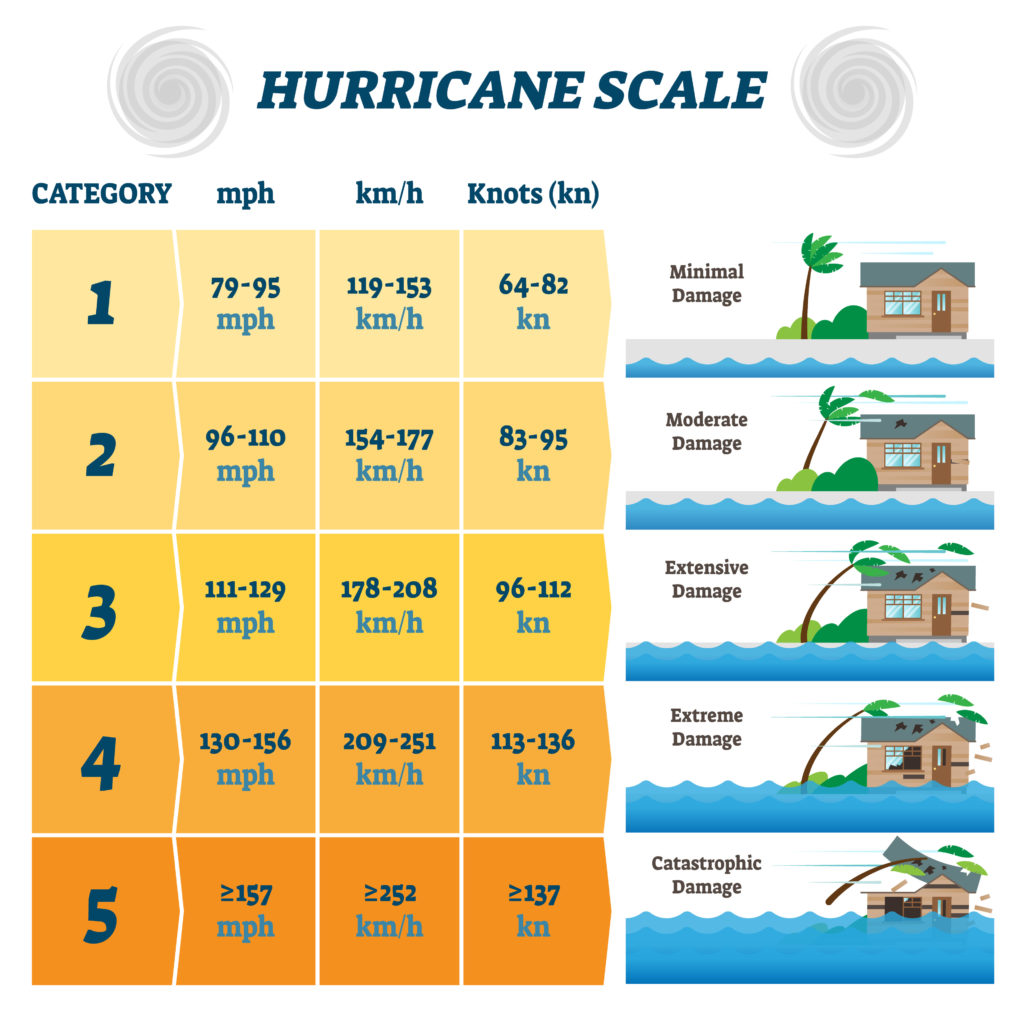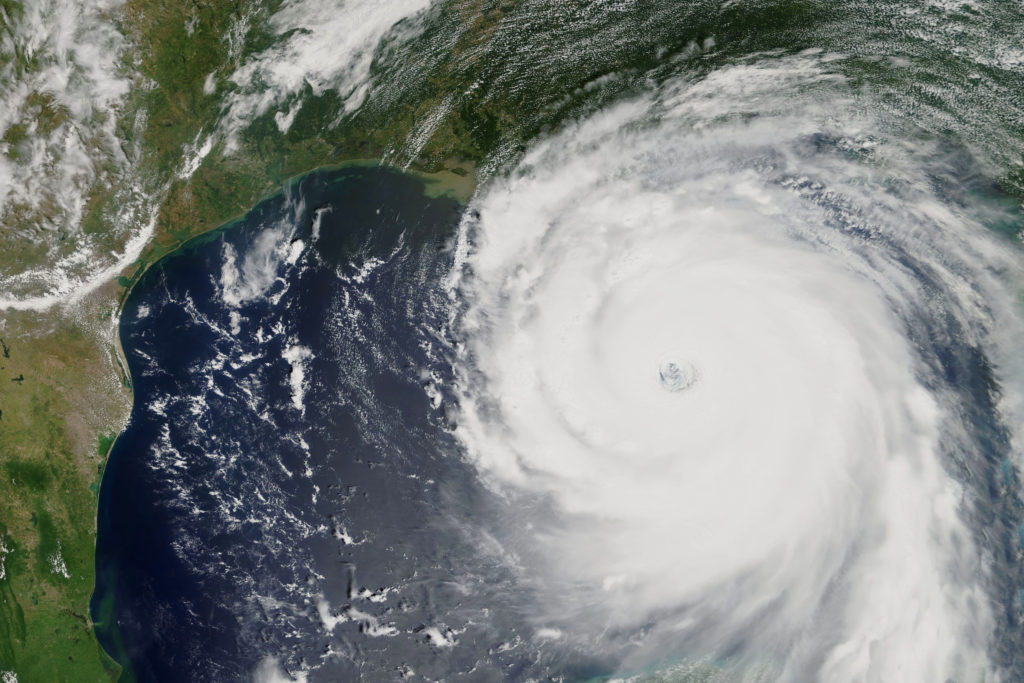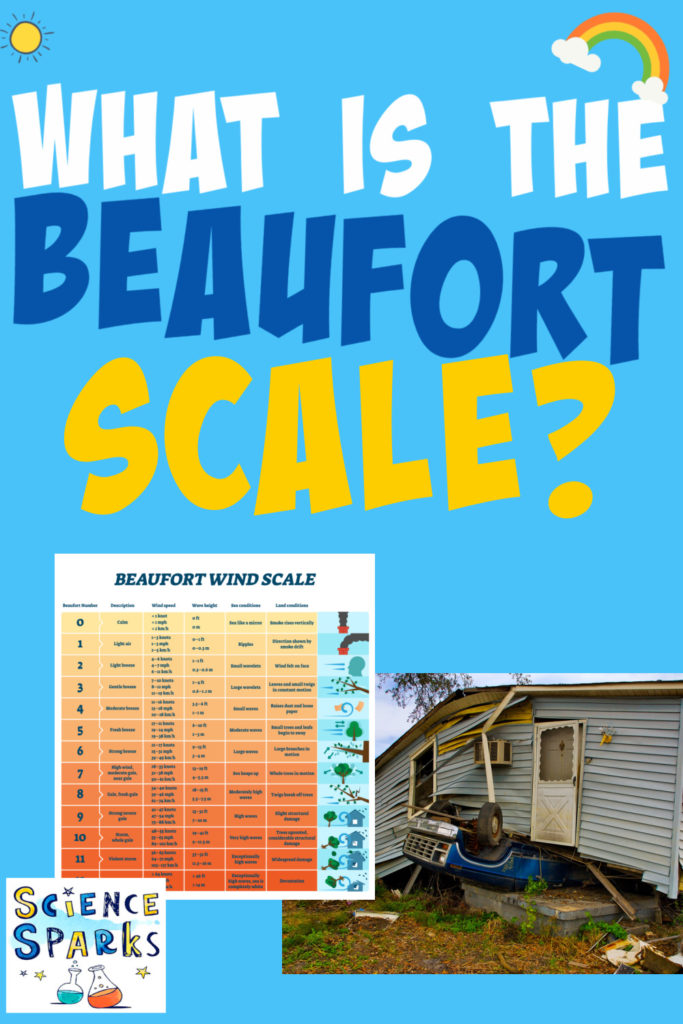The Beaufort Scale was named after Sir Francis Beaufort ( a hydrographer with the Royal Navy ) and lists the effects of increasing wind speeds.
The scale was initially designed to show the effects of the wind on a battleship at sea.

When is a hurricane warning issued?
Hurricane warnings are issued when winds reach 12 on the Beaufort scale, but this would only be a category 1 hurricane.
Hurricanes are measured on the Saffir-Simpson scale based on their wind speed.
The scale helps estimate the possible damage a hurricane may cause.
Saffir-Simpson Scale

Hurricanes start over tropical oceans as tropical cyclones (intense, rotating storms ) when they reach 74 miles per hour; they are categorised as hurricanes or typhoons in the Northwest Pacific.

Hurricane Katrina was a category 5 hurricane at its peak, with storm surges over 6m high! Over 1 million people lost their homes, and more than 1000 died.
New Orleans suffered the worst flooding, but the hurricane caused damage in Louisiana, Mississippi, Florida, Georgia and Alabama.

Don’t forget to check out my other fascinating science questions and answers!
I also have a vast collection of weather activities you might like and lots more wind experiments!
Last Updated on December 29, 2022 by Emma Vanstone

Thanks so much for the info. My students love the graphics and can connect to what we are studying.